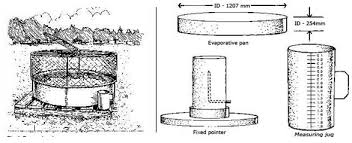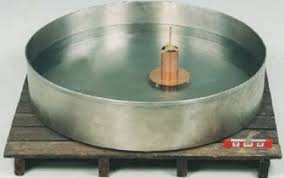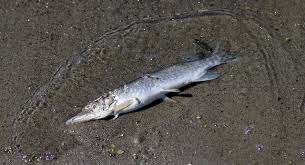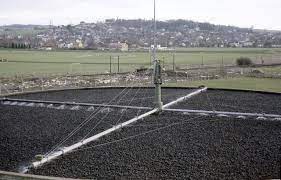Definition and Measurement of Evaporation and Evapotranspiration
This article focuses on that phase of the hydrologic cycle in which precipitation reaching the earth’s surface is returned to the atmosphere as vapour. Of the precipitation falling earthward, a portion evaporates before reaching the ground.
The discussions shall however centre on the definitions of evaporation and evapotranspiration, which include transpiration by plants and evaporation from soil, lakes, streams etc. Furthermore, the factors controlling the evaporation process and its measurement will also be highlighted.
Defining Evaporation and Evapotranspiration
Evaporation can be defined as the process by which a liquid is converted into gaseous state. It involves the net movement of individual water molecules from the surface of the earth into the atmosphere, a process occurring wherever there is a vapour pressure gradient from the surface to the air.
The rate of evaporation depends on the balance between the vaporization of water molecules into the atmosphere and the condensation rate from the atmosphere. However, when the air reaches saturation (100 percent relative humidity) no net evaporation takes place.
Wind is therefore required to remove the layer of air near the surface which would otherwise become saturated and stop net evaporation (Smithson, et al, 2002).
Transpiration is a related process involving water loss from plants. It occurs mainly by day when small pores called stomata, on leaves of the plants open up under the influence of sunlight.
They expose the moisture in the leaves to the atmosphere and, if the vapour pressure of the air is less than that on the leaf cells, the water is transpired.
As a result of this transpiration, the leaf becomes dry and a moisture gradient is set up between the leaf and the base of the plant. Moisture is drawn up through the plant and from the soil into the roots.
In reality it is often difficult to distinguish between evaporation and transpiration. Wherever vegetation is present, both processes tend to be operating together, so the two are normally combined to give the composite term evapotranspiration.
This process is governed mainly by atmospheric conditions. Energy is needed to power the process, and wind is necessary to mix the water molecules with the air and transport them away from the surface.

In addition, the state of the surface plays an important part, for evaporation can continue only so long as there is a vapour pressure gradient between the ground and the air. Thus, as the soil dries out the rate of evapotransipiration declines. Lack of moisture at the surface often acts as a limiting factor on the process.
We can therefore distinguish between two aspects of evapotranspiration. Potential evapotranspiration (PE) is a measure of the ability of the atmosphere to remove water from the surface, assuming no limitation of water supply. Actual evapotranspiration (AE) is the amount of water that is actually removed. Except where the surface is continuously moist, AE is lower than PE.
Measurement of Evaporation and Evapotranspiration
Evaporation pans have been widely used for estimating the amount of evaporation from free water surfaces.
The devices, depicted in figure.30 are easy to use, but relating measurements taken from them to actual field conditions is difficult and the data they produce are often of questionable value for making areal estimates.
A variety of pan types have been developed but the U.S. Weather Bureau Class A pan is the standard in the United States (Viessman and Lewis, 2003). Pan evaporation observations have been used to estimate both free water (lake) evaporation and evapotransipiration from well-watered vegetation.
Interestingly enough, field experiments have shown a high degree of correlation of pan data with evapotranspiration from surrounding vegetation when there is full cover and good water supply (Viessman and Lewis, 2003).
As in the case of precipitation gauges, pan data can be continuously recorded and transmitted to a central receiving station.
Read ALso : Factors Influencing Soil Moisture
Evapotranspiration measurements are often made using lysimeters. These devices are containers placed in the field and filled with soil, on which some type of vegetation growth is maintained. The object is to study soil-water-plant relationships in a natural surrounding.
The main feature of a weighing lysimeter is a block of undisturbed soil, usually weighing about 50 tons, encased in a steel shell that is 10x10x8ft. The lysimeter is buried so that only a plastic border marks the top of the underground scale sensitive enough to record even the movement of rabbit over its surface (Viessman and Lewis, 2003).
The soil is weighed at intervals, often every 30 minutes around the clock, to measure changes in soil water level. The scales are set to counterbalance most of the dead weight of the soil and measure only the active change in weight of water in the soil.
The weight loss from the soil in the lysimeter represents water used by the vegetative cover, plus any soil evaporation. Added water is also weighed and thus an accounting of water content can be kept.
Crops or cover are planted in the area surrounding the lysimeter to provide uniformity of conditions surrounding the instrument. Continuous records at the set weighing intervals provide almost continuous monitoring of conditions.
The data obtained can be transmitted to any desired location for analysis and/or other use. Weighing lysimeters can produce accurate values of evapotranspiration over short periods of time, but they are expensive.
Non-weighing types of lysimeters, which are less costly, have also been used, but unless the soil moisture content can be measured reliably by some independent method, the data obtained from them cannot be relied upon except for long- term measurements such as between precipitation events (Viessman and Lewis, 2003).



